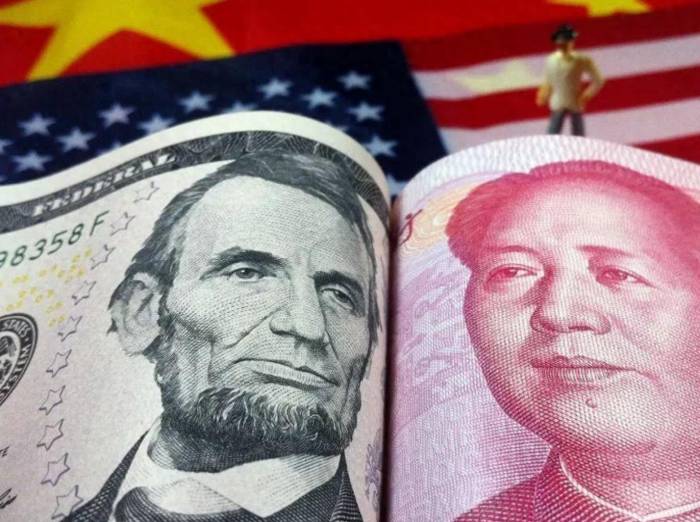Renminbi's Resilience: Rising Amid Dollar Surge
In recent weeks, the fluctuations of the Chinese yuan (RMB) have captured considerable attention, stirring curiosity and concern among both financial analysts and everyday citizens. What prompts such interest is not merely the shifting figures displayed on exchange rate screens, but the complex interplay of economic theories, political maneuvering, and global capital flows that underscore these changes. Particularly after the RMB surged past the critical threshold of 7 against the US dollar and subsequently experienced a rapid decline, many are left pondering the underlying causes of this phenomenon.
At the heart of the currency's movements is the intricate dance of finance and politics. Many experts assert that the currency's destiny is often determined not just by market fundamentals, but by international relations and strategic interests. The ongoing financial tussle between the United States and China serves as a backdrop to these developments. While the most recent interest rate cuts by the Federal Reserve suggested that the dollar might weaken, the dollar index painted a different picture. Contrarily, it climbed against expectations, demonstrating how monetary policy can often be counterintuitive.
Understandably, observers are bewildered. How is it that a reduction in interest rates—the typical trigger for currency depreciation—culminated in the opposite effect? This unprecedented scenario, where both the dollar and yuan experienced upward momentum, raises questions about the traditional tenets of currency valuation. For instance, on the almost surreal day of interest rate cuts, the dollar index peaked at 104.57, marking a significant rally compared to its September lows.
This strange market behavior does not only involve the yuan and dollar but dances across various currencies, including the euro and yen, which also experienced declines. As the yen flirted with 153 against the dollar, many wondered whether they had ventured into uncharted economic territory where the usual rules of currency valuation seem to bend or break. This unraveling of financial norms has instigated doubts among financial professionals regarding the validity of traditional economic models they have come to trust.
Time and again in 2023, oddities grew within US financial markets, illuminating a growing divergence between conventional wisdom and reality. While one might expect attractive commodities like gold or silver to soar in price amid a weak dollar, we saw all these assets rallying alongside a strengthening dollar. Such occurrences hint at an ongoing manipulation of markets, where human intervention, rather than pure economic dynamics, influences exchange rates.

This manipulation can occur through coordinated actions affecting major currencies like the euro, yen, and sterling, aimed at steering the dollar’s trajectory favorably. A weaker euro can indeed lift dollar valuations, further entrenching both the influence and interests of American financial policy. When the economic landscape favors the dollar, particularly in strategic contexts like asset pricing, the stakes grow exponentially, signifying that a powerful hand is guiding these fluctuations.
However, amid this turbulent sea of currency exchange, one must examine the surging resilience of the RMB. Over the years, the Chinese currency has progressively detached from the tightening grasp of the dollar, establishing a more diversified basket of currencies for exchange rate calculations. Consequently, while the dollar rules the roost, its influence is not as dominant over the RMB as it once was.
On closer inspection, one can observe that the ebb and flow of currency values like the RMB rely significantly on regional dynamics and global market sentiment. The resilience of the yuan derives from China's robust economic fundamentals and its ample foreign exchange reserves, exceeding 3 trillion dollars. Given such substantial support, it is somewhat implausible for any external pressures to significantly upend its value without substantial cause.
The recent patterns observed in the offshore RMB market, characterized by relative stability despite global pressures, reveal an intense contest among capital players. While market forces attempt to push the RMB lower, the underlying solid fundamentals and proactive monetary management keep the currency buoyed. This resistance points toward a deepened participation of international investors who bolster the RMB’s standing despite efforts to undercut it.
On this front, currency depreciation might traditionally be seen as a boon for export-driven economies. However, the ongoing dollar devaluation cycle frames the narrative in terms of asset pricing, highlighting that securing a robust RMB exchange rate has ramifications that transcend mere trade numbers. If leveraged correctly, stability in the RMB can preserve the value of Chinese assets against foreign-derived shifts targeting the nation’s economic foundations.
The historical precedent of the 1997 Southeast Asian financial crisis serves as a cautionary tale, where frail currencies led to widespread economic devastation. This underscores that protecting the RMB’s value is not merely an abstract numerical exercise but a vital economic strategy for maintaining stability. With the backdrop of sustained foreign reserves and acknowledging the more profound battles at play, it becomes evident that the stakes of currency valuation extend far beyond speculation.
Concurrently, since the onset of this ongoing dollar devaluation phase, US policymakers now find themselves in a race against time, wanting to employ financial strategies that can adequately shift the asset landscape in their favor while managing the implications on their economy's stability. The invisible war of currencies aims to redefine pricing power and ultimately dictate the rules of global economic engagement.
Therefore, it is imperative for global investors, analysts, and policymakers alike to remain cognizant of these complexities that morph the economic landscape and shape international finance. By understanding the interlinkages between monetary policy, currency movements, and geopolitical tensions, stakeholders can better navigate the choppy waters of a rapidly evolving global economy where profits, losses, and economic survival are often intertwined in a larger game of strategy.
Leave A Comment